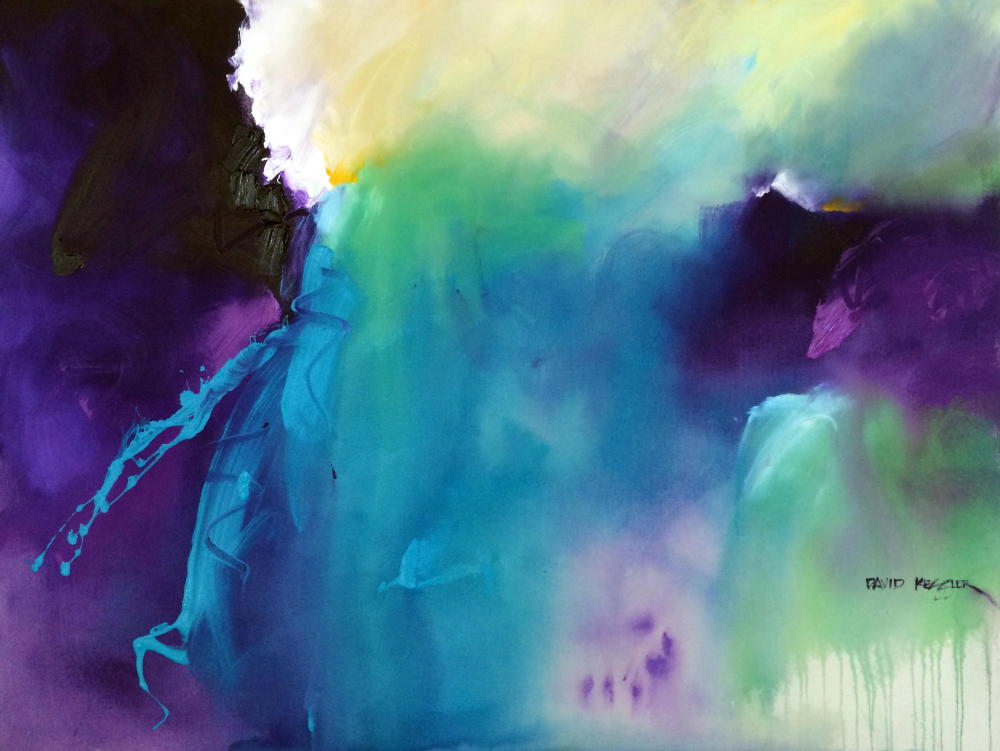The Painting of "Sea Glass 5"
/The Painting of "Sea Glass 5"
Well, it's February and I find myself thinking about the warmth of Summer. When I think about Summer, it automatically brings up memories of time spent at the coast. When I start thinking about the ocean, I usually paint my feelings about the ocean and coastal areas, and that is what I am doing in this video.
I began this painting the day before by painting a light value, warm underpainting using Buff Titanium and Titanium White. I painted it the day before so that it would be completely dry when beginning the painting. I knew I would be using lots of white in the final painting, so the underpainting was applied so I could see the white paint atop the canvas.
I chose an analogous color combination (four colors adjacent to each other on the color wheel) for this piece: blue, blue-green, green and yellow-green. Some of the colors I used were: Indigo Blue, Cobalt Blue, Cerulean Blue, Phthalo Turquoise, Blue-Green, Cobalt Turquoise, Viridian, Pyrrol Orange, Hansa Yellow Light and Titanium White. Before beginning the painting I mixed all the cool colors with Pyrrol Orange to mute the color a bit and then added white to further dilute the intensity of the colors. The only color I used with no modification out of the jar was the Indigo Blue, which is used for my darkest dark value.
I chose these colors because of their cool, watery look and feel, and their ability to convey the feeling of the ocean. Outside of the color choices, I always try to add a bit of texture in my paintings, usually in and around my centers of interest. I do this through the application of thick paint.
One of the things I always try to do to add interest is to vary the brushwork in my paintings. Students typically just use back and forth strokes. Look at the variety of brushwork I use to create different lines and textures in the painting. I think the varied brushwork helps the viewer trace the path of the brush (and the hand of the painter) through the painting, thus helping them to vicariously relive how the painting was made. This helps the viewer to make a connection with the artist and the artwork.
If you're interested in learning how to paint with more spontaneity and freedom, join me for an upcoming workshop: (You can view a list of 2018 workshops HERE)
- April 18-21 Artist's Showplace, Dallas, TX. To register contact San Cheang: magicmonkeysan@verizon.net
- May 3-5 David M. Kessler Fine Art Studio, Winston-Salem, NC. (Only 2 Seats Left!) To register online Click Here. If you have questions contact David:
- May 17-19 Lowe Mill, Huntsville, AL. To register contact Robert Daniel: robertdaniel@lowemill.net
- June 6-9 Peninsula School of Art, Door County, WI. TO register contact Elysia Michaelson: workshop@peninsulaschoolofart.org. See Details Here.
As always, thanks so much for your support!
David
P.S. If you cannot attend a live event, or prefer to learn online in the comfort of your home or studio, Abstract Painting Academy is my online workshop:
Abstract Painting Academy is the next best thing to a live workshop. You can learn more about the program by Clicking HERE.



